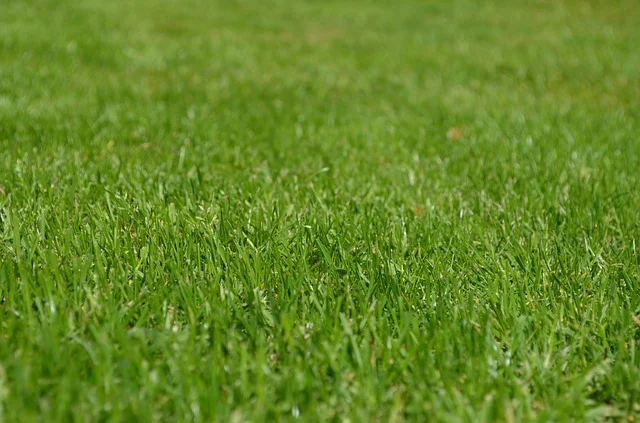Want to avoid flooding in your garden? With these tips, it works

Due to climate change, rainfall events are becoming more and more intense. Not only does this mean that the streets are flooded more often, your garden also runs the risk of flooding.
However, if you provide the water with an escape route, you are securing your yard (and home). With these interventions tips, you can prevent flooding around your home.
Every tree makes a difference
A tree works like an umbrella. More or less anyway. It stops the first drops. Then it lets the raindrops that fall on its crown slowly seep through. Slowly at first, then faster and faster. However, it holds back a lot of water.
The tree ‘intercepts’ it with its leaves and branches. On average, 21% of the amount of precipitation ‘hangs’ in the tree. Afterwards, it evaporates, little by little. Some of the rainwater that does not remain on the leaves (about 10% of the precipitation) flows down branches and twigs, along the trunk, after which it penetrates the ground close to the tree roots. Under a tree, therefore, only 69% of the precipitation falls on the ground.
Shrubs and ground covers
The same thing happens with shrubs and ground covers. Does rainwater drip from a tree into a plant border? Then it will slow down further, and so less precipitation has to go into the ground. Are there areas of bare ground among the greenery? That is not a problem, as long as the sand is sufficiently loose.
That is why it is best to pass it regularly with a rake. Or you leave it to nature and spread mulch. That thin layer of bark, cocoa shells, hemp or flax fibers or mowed grass ensures that the ground does not silt up. At the same time, mulch also acts as a brake. It retains water, after which it can evaporate.
A green roof
That a green roof is well known contributes to better water management. Not only does it provide extra greenery, but it also buffers a considerable amount of water and allows excess rainwater to drain off more slowly.
The results differ depending on the green roof system. The thicker and better quality the substrate, the more water it can buffer. An extensive green roof with an average substrate layer of 5 to 10 cm buffers about 40% of the precipitation annually. A green roof with a substrate layer of at least 30 cm thick and with larger plants even retains up to 90% of the water.
Collecting rainwater
It is best to collect excess rainwater that cannot be buffered by a green roof, but also rainwater that falls on all other roof surfaces. This can be done in an above or underground tank. Rainwater can easily be reused for many household tasks (flushing the toilet, running the washing machine…) and, of course, also for the garden during drier periods.
The rainwater tank must have an overflow that allows the excess water to drain in a controlled manner. However, don’t let that water immediately disappear into the soil. It can still prove its usefulness in the garden.
Swamp Zones
For example, use it as food for a swamp zone or a storm border. A swamp zone requires almost permanently wet soil for plants that like a lot of moisture at the roots. On the other hand, a storm border only needs an occasional (large) amount of water. The plants in such shower borders can be underwater for a short time as well as withstand longer growing periods in drier conditions.
Are there enough plants in your garden already? Then a lower area of lawn can serve as a ‘flood zone’. It is not the intention that the water remains in the wadi. It should be gone after a few hours.
Against the slope
Does your garden slope or are there places where you fear that water will keep accumulating? Then catch it on the way. You can do this by dividing your garden into drainage zones. Install a catchment strip at the lowest point of each zone. This can be a border that slopes slightly less or in which you integrate a gravel gutter, or a real drainage gutter.
If you combine the latter with a small curb, you get a rise that immediately divides your garden visually. Lead the water that you collect in this way through a pipe to a storm border, wadi or garden pond or a sequence of all that.
Is your home at the lowest point of the garden? In that case, do not connect the garden directly to the rear wall. Create a transition zone and install a catchment strip or well-functioning drainage here too. Be sure to get advice from an architect on this.
Down with the water
Have the plants received enough water, and are water spots and puddles sufficiently filled? Then let the excess water infiltrate. Here too, obligations exist in some regions and municipalities. This is possible, for example, with special infiltration crates. Crates have the advantage that they can be bought ready-made. They are sturdy and can hold a large volume of water. Moreover, you can easily link them together to achieve the desired capacity.
Water-permeable pavements
Terraces, garden paths, driveways… often cause your garden to swallow even more water. After all, they are usually lined with hard materials that stop the water. However, there are many ‘soft’ alternatives: materials that (partly) collect the rainwater and allow it to infiltrate slowly.
Green on your terrace
Of course, you won’t just open an existing terrace. However, you can reduce it in area. Set up one or more square meter gardens, build a larger planter or slide a series of pots and containers close together to form a mobile garden.
Just like a green roof, all that greenery buffers a large part of the rainwater that otherwise simply falls on your terrace. Moreover, your terrace is suddenly a lot cosier and more colorful, and you can pick the vegetables and edible flowers all summer long. Plants in pots and containers, however, have one drawback. During dry periods you should water them. Sometimes even several times a week. Fortunately, with all that water that you store in other places in the garden, that problem is solved in no time.




